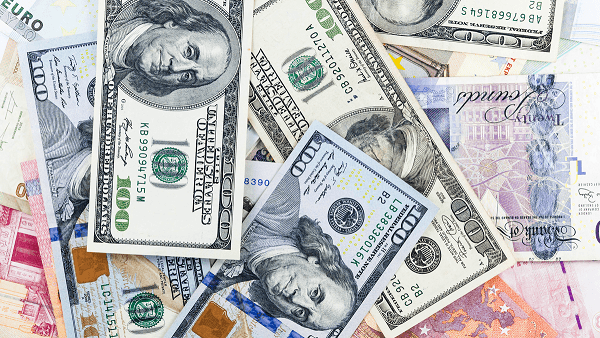Thursday was a volatile session for the pound US dollar exchange rate. Brexit uncertainties drove the pound, whilst the Federal Reserve was responsible for movement in the dollar. The pound-US dollar rate closed the session at US$1.2755, approximately the same level that it started the day.
| What do these figures mean? |
|---|
| When measuring the value of a pair of currencies, one set equals 1 unit and the other shows the current equivalent. As the market moves, the amount will vary from minute to minute.For example, it could be written:1 GBP = 1.28934 USDHere, £1 is equivalent to approximately $1.29. This specifically measures the pound’s worth against the dollar. If the US dollar amount increases in this pairing, it’s positive for the pound. Or, if you were looking at it the other way around:1 USD = 0.77786 GBPIn this example, $1 is equivalent to approximately £0.78. This measures the US dollar’s worth versus the British pound. If the sterling number gets larger, it’s good news for the dollar. |
Brexit headlines were the dominating driving force for the pound in the previous session, as the Brexit bill continued to be debated in Parliament. Japanese Prime Minister Shinzo Abe was in Britain meeting UK Prime Minister Theresa May. Mr Abe publicly expressed his desire for the UK to avoid a no deal Brexit.
A no deal Brexit is the default option should Theresa May’s deal no be approved by Parliament when ministers vote on 15th January. This is the case even though the majority in Parliament supported a motion, which would make it harder for the UK to crash out of the EU without a deal. Mr Abe’s support is unlikely to be enough to help Theresa May’s deal across the line.
Today Brexit headlines will continue to drive movement in the pound. However, the UK economic calendar has several high impacting releases which could grab investor attention away from Brexit. UK manufacturing and industrial production will be released first. UK GDP data will also be under the spotlight.
Analysts are expecting the UK GDP to have slowed to 0.3% in the three months to November, down from 0.4%, as Brexit uncertainties weigh on the economy. The weaker data could pull the pound lower.
| Why does poor economic data drag on a country’s currency? |
|---|
| Slowing economic indicators point to a slowing economy. Weak economies have weaker currencies because institutions look to reduce investments in countries where growth prospects are low and then transfer money to countries with higher growth prospects. These institutions sell out of their investment and the local currency, thus increasing supply of the currency and pushing down the money’s worth. So, when a country or region has poor economic news, the value of the currency tends to fall. |
Will US Inflation Pull Dollar Lower?
The dollar started the previous session on the front foot, before dropping lower. Comments by Federal Reserve Chair Jerome Powell weighed on demand for the dollar. Mr Powell affirmed the central bank’s flexible rate outlook. He confirmed that slowing inflation will give the Fed the breathing space necessary to be patient on hiking rates.
Only in December the Fed has indicated that it would hike rates 2 or 3 times in 2019. Now it looks like the Fed may not hike at all. The reduced possibility of an interest rate rise sent the dollar lower.
| Why do raised interest rates boost a currency’s value? |
|---|
| Interest rates are key to understanding exchange rate movements. Those who have large sums of money to invest want the highest return on their investments. Higher interest rate environments tend to offer higher yields. So, if the interest rate or at least the interest rate expectation of a country is relatively higher compared to another, then it attracts more foreign capital investment. Large corporations and investors need local currency to invest. More local currency used then boosts the demand of that currency, pushing the value higher. |
Today investors will look towards US inflation data to support the words from the Fed Chair. Analysts are expecting inflation to have increased by 1.9% year on year in December, down from 2.2% the month previous.
This publication is provided for general information purposes only and is not intended to cover every aspect of the topics with which it deals. It is not intended to amount to advice on which you should rely. You must obtain professional or specialist advice before taking, or refraining from, any action on the basis of the content in this publication. The information in this publication does not constitute legal, tax or other professional advice from TransferWise Inc., Currency Live or its affiliates. Prior results do not guarantee a similar outcome. We make no representations, warranties or guarantees, whether express or implied, that the content in the publication is accurate, complete or up to date. Consult our risk warning page for more details.
This article was initially published on TransferWise.com from the same author. The content at Currency Live is the sole opinion of the authors and in no way reflects the views of TransferWise Inc.





